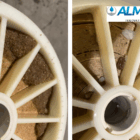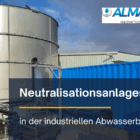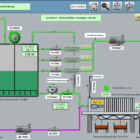Coagulation is a fundamental step in water and wastewater treatment that contributes to the removal of suspended solids, colloidal particles and finely dispersed organic matter. The aim of coagulation is to aggregate the fine particles distributed in the water or wastewater into larger flocs that are easier to separate. Coagulation is a central component of physical-chemical water treatment and is used in many industries, such as the paper and pulp industry, metal processing, the food and beverage industry and in municipal wastewater treatment plants.
Table of contents
Technical background to coagulation
Coagulation is a physico-chemical process that enables charge neutralization and the bringing together of very fine particles in water. As a rule, these particles are colloidal substances that form a stable suspension in the water due to their surface charge. Coagulation is initiated by the addition of coagulantswhich neutralize the surface charges of the particles and thus enable the formation of larger aggregates.
The mechanism of coagulation
Charge neutralization:
- Colloidal particles usually have a negative surface charge, which keeps them in suspension. When positively charged coagulants such as aluminium or iron ions are added, this charge is neutralized.
- Typical coagulants are aluminum sulfate (Al₂(SO₄)₃), ferric chloride (FeCl₃) and polyaluminum chloride (PAC). These compounds dissolve in water and release positively charged ions, which bind to the negatively charged particles and balance their surface charge.
Destabilization and bridging:
- After charge neutralization, the particles can come closer together, and van der Waals forces and bridging bonds enable bonding between the individual particles. This is how primary flakes are formed.
- By adding flocculants or polymers such as polyacrylamides, this process can be intensified and stabilized. The bridging leads to the aggregation of the primary flocs and promotes the formation of larger and more stable flocs that can be separated more easily.
pH dependence:
- The effectiveness of coagulation is highly pH-dependent. For example, aluminum sulfate is best used in the slightly acidic to neutral pH range, as this provides the best conditions for the formation of aluminum hydroxide flocs. Coagulants containing iron, on the other hand, are effective in a somewhat broader pH range.
- Optimizing the pH value is crucial in order to achieve maximum floc formation and thus efficient solids separation.
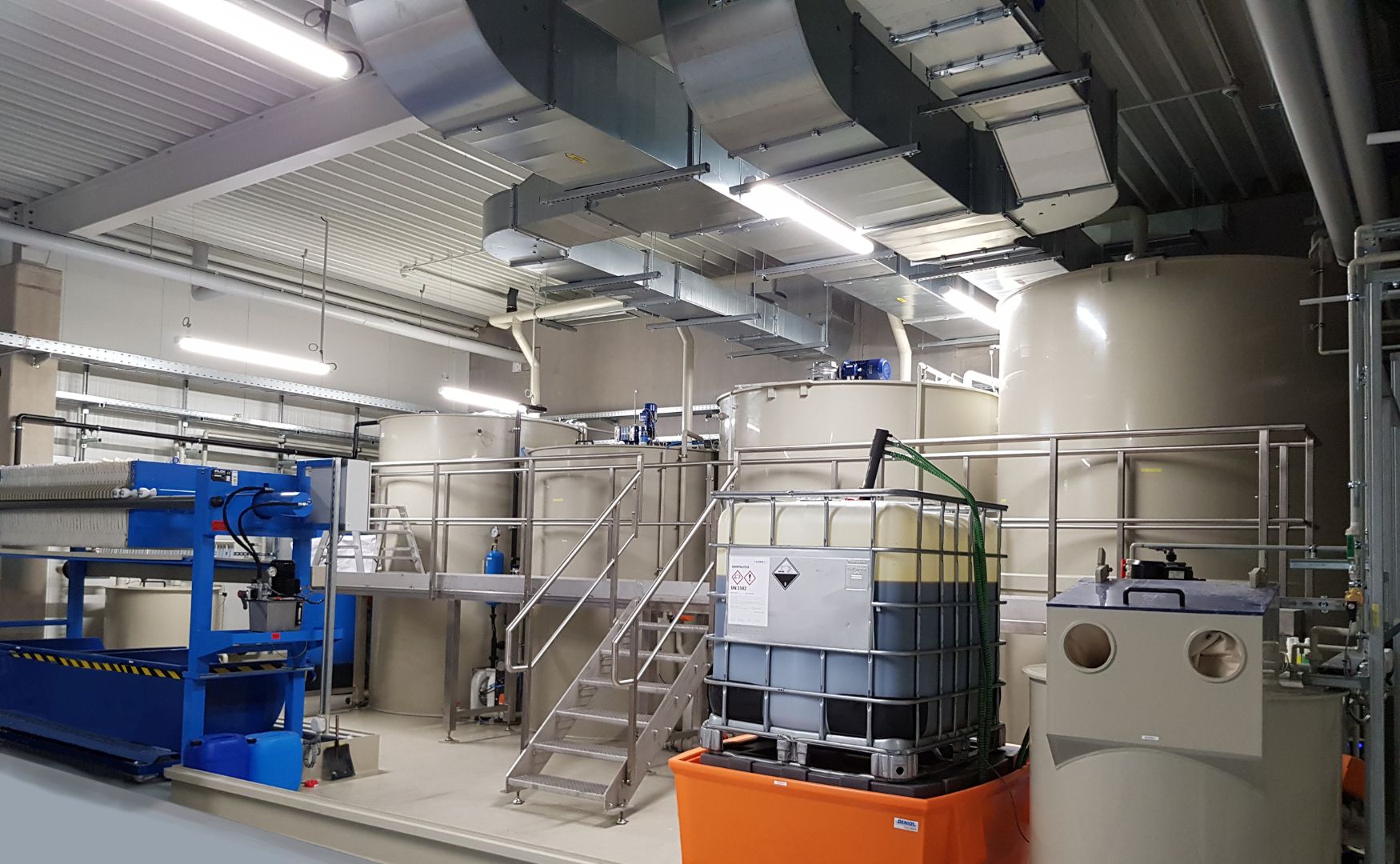
Photo: CP plant (precipitation and flocculation plant) ALMA Chem MCW for coagulation and elimination of pollutants
Types of coagulants and their specific applications
Metal-based coagulants
- Aluminum sulfate (Al₂(SO₄)₃)Is often used in drinking water treatment and industrial waste water treatment. It is particularly effective at removing turbidity and organic substances and is optimal in a pH range of around 5 to 7.
- Ferric chloride (FeCl₃) and ferrous sulphate (FeSO₄): Both iron compounds are highly effective at removing phosphates and heavy metals. Ferric chloride is often used in industrial applications such as electroplating and the paper industry to remove metal ions and suspended solids.
- Polyaluminum chloride (PAC)A highly effective precipitant that provides stronger floc formation than aluminum sulfate. PAC is used especially at lower dosages, which reduces operating costs. It is widely used in municipal and industrial applications.
Organic coagulants
- Polyamines and polyquats (polyquaternary ammonium compounds): These organic compounds are often used as coagulants in combination with other metal precipitants and are particularly useful in the textile industry and in the treatment of wastewater with a high organic content.
- Cationic polymersThese are used to further improve the stability and size of the flocs and are particularly effective in dewatering and sludge conditioning in municipal wastewater treatment.
Applications of coagulation in practice
Drinking water treatment:
- Coagulation is used here to remove turbidity, suspended solids and organic impurities. The formation of flocs makes the water clearer and the particles can be easily separated by flotation or sedimentation in CP systems.
- Compliance with high water quality standards is particularly important in order to remove harmful substances from drinking water.
Industrial wastewater treatment:
- In industrial wastewater treatment, coagulation is used for heavy metal removal, phosphate elimination and dye removal. Coagulation is often the first step in removing particles and pollutants before biological or further physico-chemical treatment.
- In the textile and leather industries, coagulation is used to remove dyes and surfactants that would otherwise make the wastewater colored and difficult to treat.
Paper and pulp industry:
- Coagulation plays a decisive role in sludge removal and in the reduction of COD values (chemical oxygen demand). Coagulation contributes to the separation of fibers and the removal of process chemicals that enter the wastewater during production.
Food and beverage industry:
- Coagulation is used here to remove organic substances and phosphates that enter the wastewater as a result of the production processes. The efficient removal of solids reduces the wastewater load and ensures compliance with the strict wastewater limits.
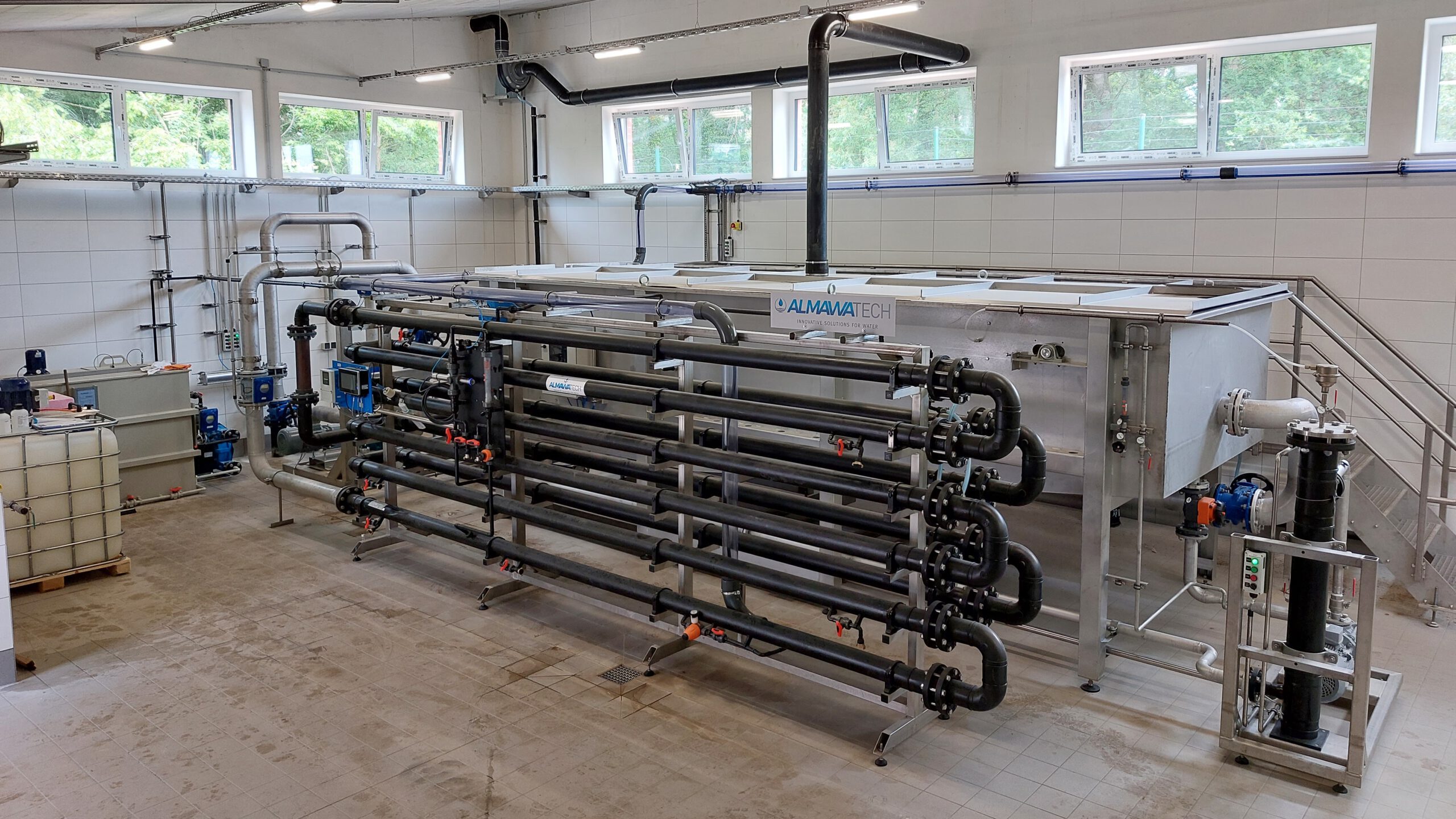
Photo: ALMA NeoDAF flotation system for coagulation and elimination of pollutants
Advantages and challenges of coagulation
Advantages:
- Effective solids removal: Coagulation is extremely effective in removing fine particles and colloidal substances that cannot be separated by simple sedimentation.
- Improved water quality: The floc formation significantly improves the filterability and clarity of the water, which is particularly important in drinking water treatment.
- Flexible application: The wide range of available coagulants means that coagulation can be adapted to different wastewaters and requirements, whether in municipal or industrial applications.
Challenges:
- Optimization of the pH value: Coagulation is strongly pH-dependent. A non-optimal pH value can impair the effectiveness of floc formation and require additional pH adjustment.
- Sludge formation: Coagulation generates a considerable amount of sludge that has to be dewatered and disposed of in chamber filter presses, which can result in additional operating costs.
- Corrosiveness: Some coagulants, such as ferric chloride, are highly corrosive and require a specially designed dosing system and suitable storage conditions.
Coagulation solutions from ALMAWATECH: ALMA AQUA Wastewater
ALMAWATECH offers an extensive range of customized coagulants and flocculants in the product line ALMA AQUA Wastewater. Our portfolio includes aluminum sulfate, ferric chloride, polyaluminum chloride and other coagulants that are adapted to specific requirements and pH ranges. With our support, wastewater can be precisely analyzed and the appropriate coagulants selected to maximize separation performance. Our experienced team offers comprehensive advice and test analyses to find the right solution for your processes.
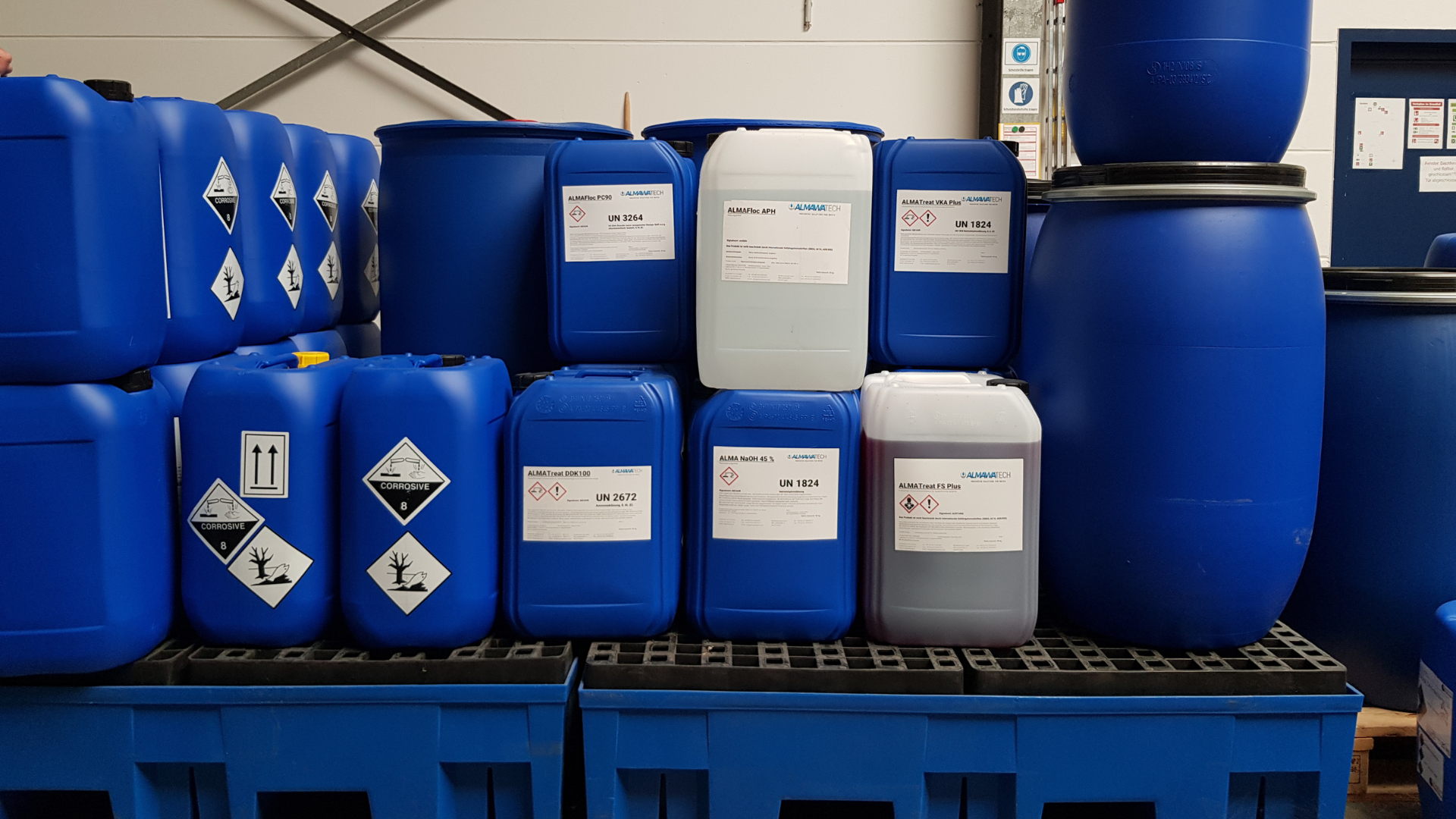
Photo: Application-specific operating resources ALMA AQUA wastewater: precipitants, flocculants, neutralizing agents and other products
Conclusion
Coagulation is a key step in water and wastewater treatment that enables the effective removal of suspended solids and dissolved substances. Thanks to the variety of coagulants and the flexibility of the process, coagulation can be used in a wide range of applications - from drinking water treatment to industrial wastewater treatment. The targeted use of ALMAWATECH's product range of coagulants and flocculants enables
For further information on our products, please feel free to contact us at any time!



